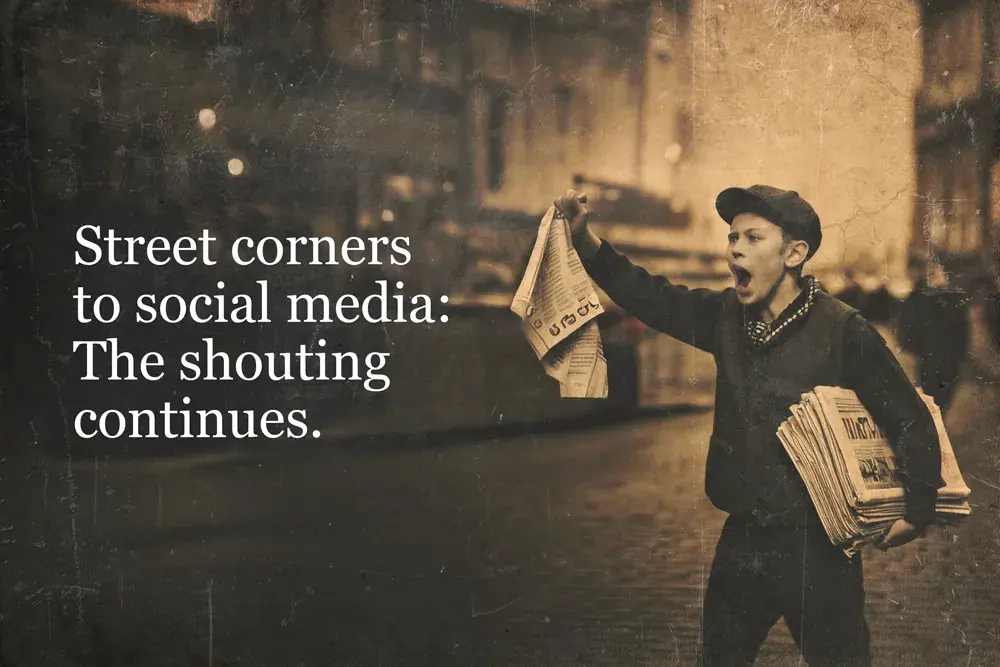The once-clear line between objective reporting and opinion has blurred
Traditional news outlets, once trusted for fact-based, impartial reporting, now face a fierce battle for attention. Many organisations are turning to sensational headlines and provocative visuals to capture viewers in an era defined by social media and viral content.
Sensationalism by design
The bold, clickbait-style headlines you encounter aren’t accidental. They are a deliberate strategy, an immediate demonstration of how modern digital media prioritises engagement over exhaustive analysis. These headlines are engineered to capture attention instantly, even if they sacrifice some depth or nuance. When the “news” is presented rapidly, the context of the topic can be lost very quickly.
Titles like “Shocking Truth Revealed!” and “This will change your life!” are TikTok, Instagram, and YouTube titles. In these spaces, the personality and presentation of the content creator often take precedence. This is inevitable in today’s fast-paced digital environment; people engage more with individuals than on topics.
The rise of news influencers
Over the past few years, social and video networks have empowered social and video networks and revolutionised how news is shared. While much of the content on these platforms isn’t strictly “news” in the traditional sense, a few influencers have risen to prominence, significantly shaping public discourse. These digital personalities blend entertainment with information, often using sensational methods to engage their audience.
This chart illustrates the growing influence of digital personalities on news consumption.
The data shows that influencers are now a critical component of the news ecosystem. Their growing presence has forced traditional media to evolve, challenging them to deliver engaging and informative content.
Traditional news is chasing clicks
Under pressure from digital platforms, established news organisations increasingly adopt sensationalist techniques. A significant trend is emerging: legacy media are shifting from in-depth investigative work to producing content with bold, provocative headlines and striking visuals designed to capture quick clicks. Video is superb for these techniques; watch YouTube, and they all follow the same formula intended to hook you in.
This chart highlights the declining reliance on legacy news video sources and the rise of social media as a primary channel for breaking news.
This shift reflects a broader transformation in news consumption. While reputable outlets still command respect, a growing audience now turns to social media for daily updates. This isn’t merely a marketing tactic. It’s a strategic adaptation to the digital age.
When clicks overshadow truth
This evolution, however, raises critical questions. When news is repackaged as a series of attention-grabbing opinions, does the pursuit of clicks undermine accuracy and depth? Can the authenticity of an influencer or the allure of a sensational headline make up for the absence of rigorous, fact-checked reporting? As consumers, our challenge is to sift through the barrage of sensationalism and identify reliable information.
Rethinking news in the viral era
In a world where even the most serious topics are distilled into viral soundbites and flashy thumbnails, we must reconsider what constitutes true news. Is it news if it’s merely another opinion crafted to generate clicks? As digital media continues to evolve, the most credible outlets will be those that balance engaging presentation and journalistic integrity.
News organizations can bridge the gap between sensational appeal and factual accuracy by embedding authoritative data- such as the charts above. These visual insights document the shifting landscape and call for a renewed commitment to engagement and truth.
As we navigate this brave new digital world, content creators and audiences must remain vigilant. In redefining “news,” our collective challenge is to demand content that informs, engages, and upholds the trust that traditional reporting once guaranteed.





